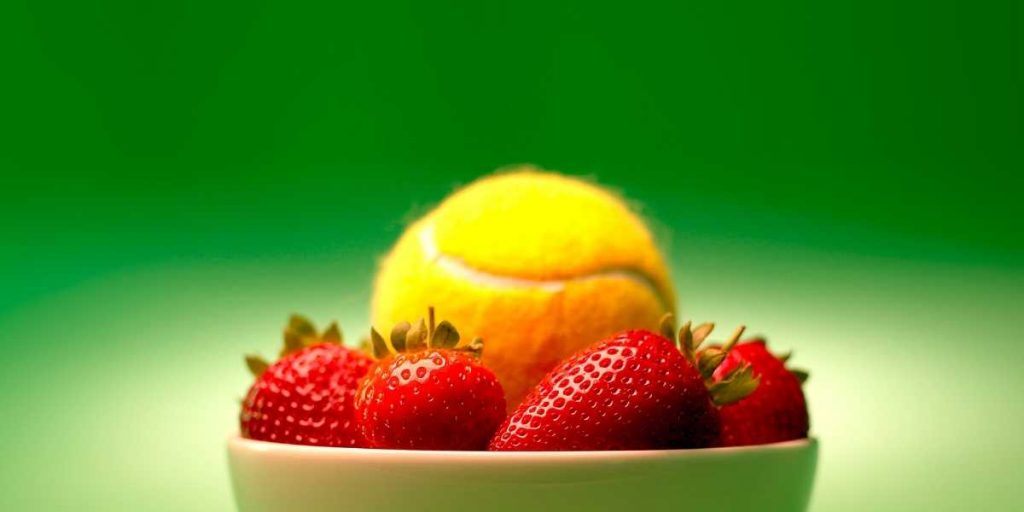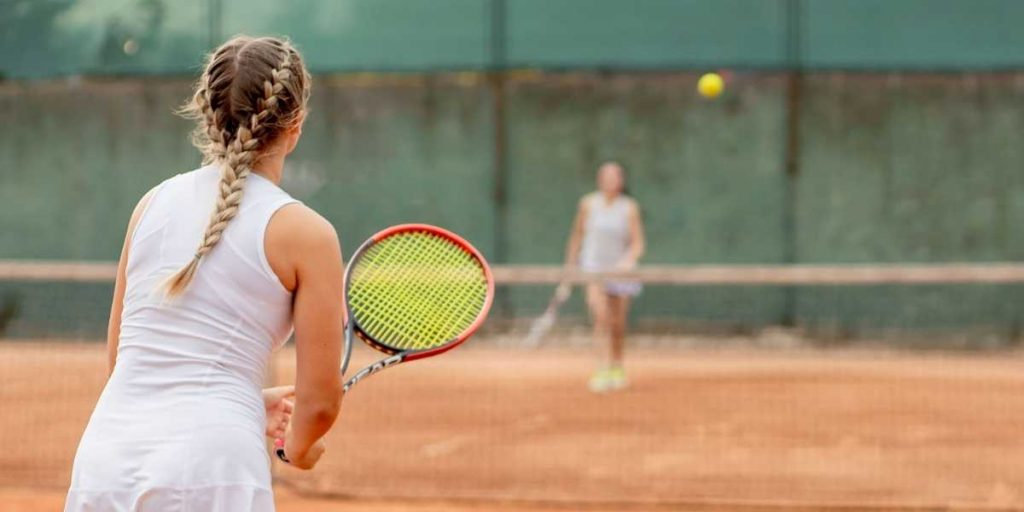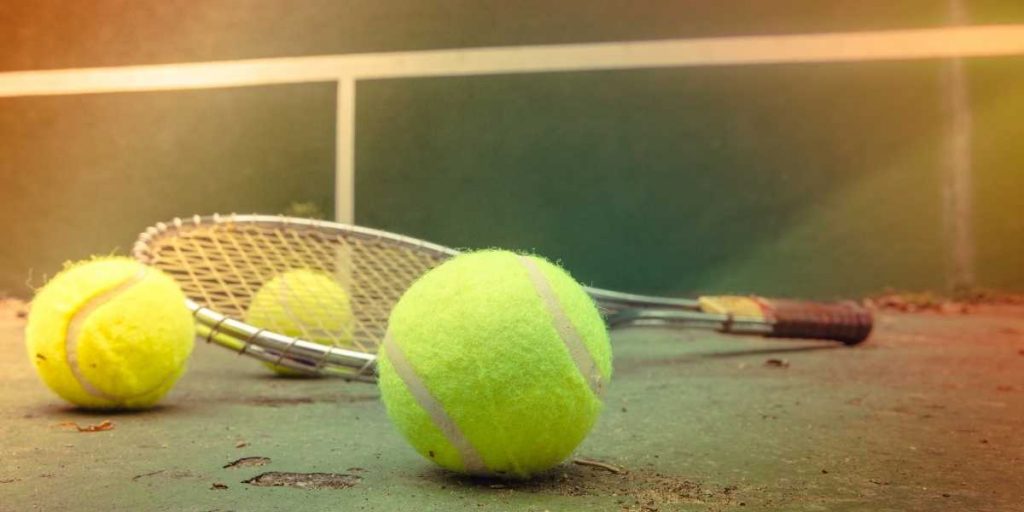Pressurized vs non-pressurized tennis balls [ Expert Opinion ]
pressurized vs non-pressurized tennis balls there are two types of tennis balls: pressurized and non-pressurized.
Pressurized balls have a small amount of air inside them, which makes them bouncier than non-pressurized balls.
This means that pressurized balls are better for playing on hard courts, while non-pressurized balls are better for playing on soft courts.
Do Pressureless Tennis Balls Hit the Same as Regular Balls?

There is no definitive answer to this question as it depends on a number of factors, such as the type of tennis ball, the surface it is being hit on, and the player’s own technique.
However, some players believe that pressureless tennis balls do not bounce as high as regular balls, and so they are easier to control.
Other players find that pressureless balls are just as likely to go out of bounds as regular balls.
Ultimately, it is up to the individual player to experiment with different types of tennis balls to see which one suits their game the best.
Pressurized Ball Specs
- Material: 316 stainless steel
- Diameter: 1/2″
- Pressure: 150 PSI
- Temperature range: -60 to +200 degrees F
- Hardness: Rockwell C22
- Corrosion resistance: excellent
- Non-magnetic
- Will does not corrode or tarnish
- Maintenance-free
- Lifetime warranty
Pressurized Ball Pros and Cons
There are a few key advantages and disadvantages to using a pressurized ball:
Pros
- They are very easy to use and require little to no maintenance.
- They are very affordable and can be found at most sporting goods stores.
- They are very durable and can withstand a lot of wear and tear.
Cons
- They can be difficult to control and may not be suitable for all players.
- They can be uncomfortable to hold for extended periods of time.
Non-Pressurized Ball Specs
- Operates at temperatures up to 250°F.
- Withstands pressures up to 150 psi.
- Good chemical resistance.
- Excellent abrasion resistance.
- Low coefficient of friction.
- Excellent dimensional stability.
- Resistant to staining.
- Easy to clean.
- Non-porous.
- FDA compliant.
Non-Pressurized Balls Pros and Cons
There are a few key advantages and disadvantages to using Non-Pressurized Balls.
Pros
- Non-pressurized balls are less likely to explode or burs during play.
- They are less likely to cause injuries if they are accidentally hit by players.
- They are more likely to stay inflated longer than pressurized balls.
- They are typically cheaper than pressurized balls.
- They are better for the environment because they do not require the use of harmful chemicals to inflate them.
Cons
- A ball made of a soft, flexible material like rubber or foam
- A ball made of harder material like metal or stone
- A ball made of a fragile material like glass
- A ball filled with a liquid like water or oil.
Pressurized vs non-pressurized tennis balls – Which Is The Better Option?

Pressureless tennis balls are a great option for those who want a ball that will last longer. These balls do not have a core, so they are not as likely to lose their bounce over time. Pressureless tennis balls are also less likely to break when you hit them with a lot of force. Pressurized tennis balls, on the other hand, have a core that is filled with air. This makes them more likely to bounce back when you hit them with a lot of force. However, pressurized tennis balls can lose their bounce over time and may even break if you hit them too hard.
Can you stop pressurized balls from losing their bounce?
If you have a pressurized ball that is losing its bounce, there are a few things you can do to try to restore its bounce. First, check the ball for any leaks. If the ball is leaking, it will need to be re-inflated. If there are no leaks, try bouncing the ball on a hard surface. If the ball is still not bouncing as well as it used to, you can try gently heating the ball with a hairdryer. Be careful not to overheat the ball, as this could damage it.
how to choose the right type of tennis balls?

When choosing tennis balls, the three main considerations are bounce, durability, and spin.
Bounce: A ball with good bounce will spring up high when struck, and will allow for longer rallies. A ball with poor bounce will not spring up as high and will cause shorter rallies.
Durability: A ball that is durable will be able to withstand repeated hits without losing its shape or breaking. A ball that is not durable will break or lose its shape after only a few hits.
Spin: A ball with good spin will rotate quickly when hit, and will allow for more control over the shot. A ball with poor spin will not rotate as quickly and will be more difficult to control.
What’s the difference between pressurized and pressureless tennis balls?

Pressurized tennis balls have a rubber bladder that is filled with air to a specific pressure. The pressure helps the ball keep its shape and provides a consistent bounce. Pressureless tennis balls do not have a rubber bladder. Instead, the core of the ball is made of solid rubber. This makes the ball more durable, but it also means that the ball does not have a consistent bounce.
How Long Do Pressurized Balls Last?
A pressurized ball typically lasts for around two to three hours. This can vary depending on the size of the ball, the amount of air pressure inside, and the temperature. If you are using a pressurized ball in hot weather, it will likely not last as long as it would in cooler weather.
Which is better pressurized or pressureless tennis balls?

There is no definitive answer to this question as it depends on personal preferences. Some people prefer pressurized tennis balls because they feel that they provide more power and control. Others prefer pressureless tennis balls because they feel that they provide more comfort and are less likely to cause injury. Ultimately, it is up to the individual to decide which type of ball is best for them.
Are pressurized tennis balls better?
There is no definitive answer to this question as it depends on player preference. Some players find that pressurized tennis balls have a more consistent bounce and feel, while others prefer the non-pressurized balls for their softer surface. Ultimately, it is up to the individual player to decide which type of ball is best for their game.
How long do non-pressurized tennis balls last?
Tennis balls without pressurization can last quite a while if they are properly stored. If stored in a cool, dry place, they can last for several years. However, if they are stored in a humid or wet environment, they will only last for a few months.

[…] can old tennis balls be disposed of as pressurized tennis […]